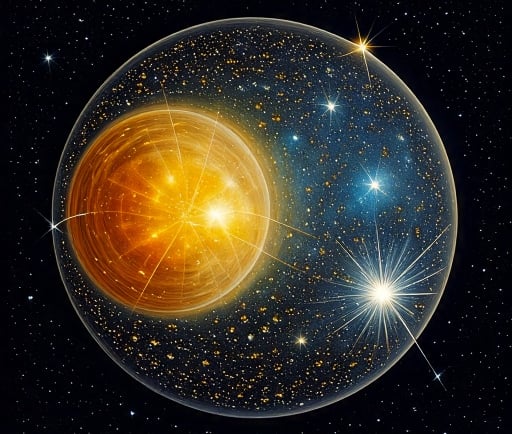Upsilon Andromedae b: A Gas Giant in a Binary Star System


Introduction to Upsilon Andromedae b
Upsilon Andromedae b, often simply referred to as Upsilon Andromedae A b, is a fascinating exoplanet situated approximately 44 light-years away in the Andromeda constellation. This gas giant has attracted considerable attention due to its unique position in a binary star system. Understanding such celestial bodies can provide key insights into the formation and evolution of planetary systems.
Characteristics of Upsilon Andromedae b
Upsilon Andromedae b is classified as a gas giant, similar in many ways to Jupiter and Saturn within our solar system. This planet boasts a substantial mass, estimated to be around 0.69 times that of Jupiter, and exhibits a 4.6-day orbit around its primary star, Upsilon Andromedae A. In addition to its mass, the gas giant is characterized by a thick atmosphere composed predominantly of hydrogen and helium, with the presence of various trace elements.
The Binary Star System
What makes Upsilon Andromedae b particularly intriguing is its relationship with its host stars. It resides in a binary system, which consists of Upsilon Andromedae A, a G-type star, and Upsilon Andromedae B, a smaller K-type star. Such binary systems are essential for understanding the dynamics of planet formation and migration. The gravitational effects of the second star could influence the orbital characteristics and stability of gas giants like Upsilon Andromedae b. Studies suggest that the presence of a companion star may lead to complex orbital interactions, affecting the planet’s atmosphere and potential habitability.
A Closer Look into Research
Scientific research on Upsilon Andromedae b employs advanced observational techniques, including transit photometry and radial velocity measurements. These methods help astronomers determine specific parameters of the planet, including its mass, radius, and atmospheric composition. As technology evolves, further exploration of gas giants like Upsilon Andromedae b will likely reveal new and exciting findings regarding their formation processes and their role within binary star systems.
Conclusion
In summary, Upsilon Andromedae b stands out not just as a gas giant, but as a pivotal element in the study of exoplanets and their environments. By examining the complexities of its binary star system and understanding its characteristics, we can gain invaluable knowledge that could reshape our perceptions of planetary systems across the universe. As research in exoplanet studies continues to advance, Upsilon Andromedae b will remain an object of significant interest for astronomers and astrophysicists alike.
